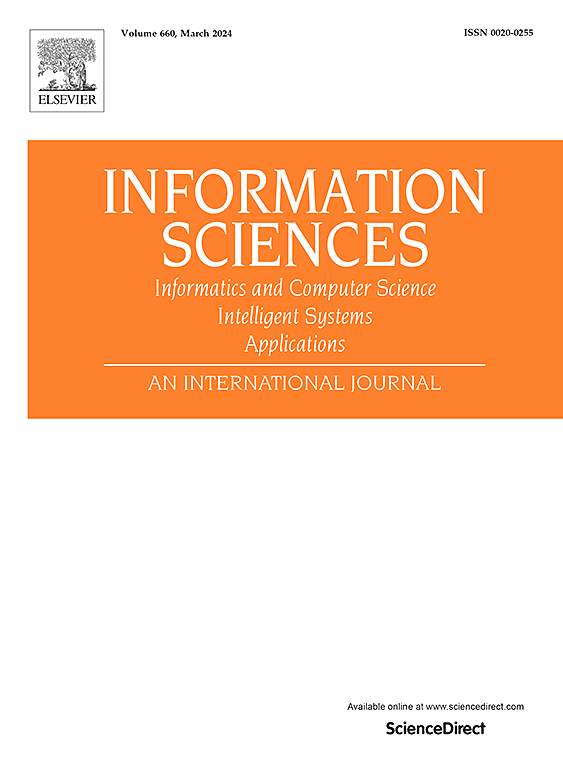基于自适应标签传播的非负矩阵分解的多视图数据表示
IF 8.1
1区 计算机科学
0 COMPUTER SCIENCE, INFORMATION SYSTEMS
引用次数: 0
摘要
非负矩阵分解(NMF)集成标签传播(LP)算法可以提高低维表示的识别能力。然而,传统的基于LP的NMF方法需要提前构造一个k近邻图来获得LP的权矩阵。这增加了调整邻域参数k的负担,并导致次优权重矩阵。为了解决这些问题,设计了一种自适应标签传播NMF (Adaptive Label Propagation NMF, ALPNMF)框架,共同最小化数据重构误差和预测软标签重构误差。首先,ALPNMF在不调整邻域参数k的情况下同时完成邻域选择和权值计算。其次,ALPNMF考虑了图权学习与LP之间的依赖关系,从而为LP生成全局最优的图权矩阵和更准确的预测软标签矩阵,用于指导分解过程。最后,为了结合来自不同视图的信息以获得更有效的低维表示,我们将ALPNMF扩展为一种新的多视图NMF方法,称为通过自适应标签传播NMF (MALPNMF)的多视图数据表示。在5个基准多视图数据集上的实验结果表明,MALPNMF优于其他最先进的多视图NMF方法。本文章由计算机程序翻译,如有差异,请以英文原文为准。
Multi-view data representation via adaptive label propagation nonnegative matrix factorization
Nonnegative matrix factorization (NMF) integrating label propagation (LP) algorithm can enhance the discrimination ability of low-dimensional representations. However, traditional LP-based NMF approaches require the construction of a k-nearest neighbor graph in advance to obtain the weight matrix for LP. This increases the burden of adjusting the neighborhood parameter k and leads to a suboptimal weight matrix. To address these issues, an Adaptive Label Propagation NMF (ALPNMF) framework is designed by jointly minimizing the data reconstruction error and the predicted soft label reconstruction error. First, ALPNMF completes neighbor selection and weight calculation simultaneously, without adjusting the neighborhood parameter k. Second, ALPNMF takes into account the dependence between the graph weight learning and LP, thereby yielding the globally optimal graph weight matrix for LP and the more accurate predicted soft label matrix for guiding the decomposition process. Finally, with the aim of combining the information from diverse views to acquire more efficient low-dimensional representations, we extend ALPNMF to a new multi-view NMF approach named Multi-view data representation via Adaptive Label Propagation NMF (MALPNMF). Experimental results on five benchmark multi-view datasets demonstrate that MALPNMF outperforms other state-of-the-art multi-view NMF methods.
求助全文
通过发布文献求助,成功后即可免费获取论文全文。
去求助
来源期刊

Information Sciences
工程技术-计算机:信息系统
CiteScore
14.00
自引率
17.30%
发文量
1322
审稿时长
10.4 months
期刊介绍:
Informatics and Computer Science Intelligent Systems Applications is an esteemed international journal that focuses on publishing original and creative research findings in the field of information sciences. We also feature a limited number of timely tutorial and surveying contributions.
Our journal aims to cater to a diverse audience, including researchers, developers, managers, strategic planners, graduate students, and anyone interested in staying up-to-date with cutting-edge research in information science, knowledge engineering, and intelligent systems. While readers are expected to share a common interest in information science, they come from varying backgrounds such as engineering, mathematics, statistics, physics, computer science, cell biology, molecular biology, management science, cognitive science, neurobiology, behavioral sciences, and biochemistry.
 求助内容:
求助内容: 应助结果提醒方式:
应助结果提醒方式:


